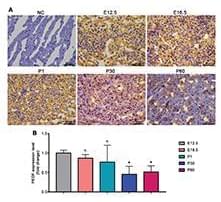“Siri, play gold dust by flux pavilion”
The James Webb Space Telescope detected a cosmic phenomenon known as a kilonova, which can create gold, platinum, and uranium in space.


Entrepreneur and venture capitalist Marc Andreessen is among the many people speaking out about the opportunities and risks of artificial intelligence and the growth of ChatGPT. The comments from Andreessen come as valuations have risen for artificial intelligence stocks.
What Happened: Fresh off his report called “Why AI will save the world,” Andreessen shared more details on the opportunities for artificial intelligence during a recent podcast appearance.
Andreessen argued that AI could save the world, a bold claim that includes looking at the religion of sorts of the AI movement.


Nicholas Play they wrote an article for you.
A panel of AI-enabled humanoid robots told a United Nations summit on Friday that they could eventually run the world better than humans.
But the social robots said they felt humans should proceed with caution when embracing the rapidly-developing potential of artificial intelligence.
And they admitted that they cannot – yet – get a proper grip on human emotions.

The debate surrounding the use of AI chatbots and copyright is really starting to heat up.
Case in point, comedian and author Sarah Silverman has filed a lawsuit, alongside two other authors, against OpenAI and Meta for copyright infringement, The Guardian reports.
They’re claiming that OpenAI’s very popular ChatGPT and Meta’s own AI model LLaMA were trained on their books as dataset fodder, without their consent.

Well, not yet because there is a new solution that promises an end to our need of cutting trees. A team of researchers at MIT claims that lab-grown timber can replace deforestation driving products made from real wood. They have developed a technique using which timber can be produced in any shape and size, so for example, if you need a new wooden chair, using the researcher’s technique, you can create it in a lab without cutting a single tree.

Summary: Deep-sleep brain waves could be a significant factor in regulating blood sugar. The research shows that a combination of sleep spindles and slow waves can predict an increase in insulin sensitivity, subsequently lowering glucose levels.
This discovery highlights sleep as a potential lifestyle adjustment to improve blood sugar control and manage diabetes. Furthermore, these deep-sleep brain waves could also be used to predict an individual’s next-day glucose levels, proving more accurate than traditional sleep metrics.

Objective: This study describes the expression profiles and roles of cardiac pigment epithelium-derived factor (PEDF) during cardiac development.
Methods: Gene datasets from the Gene Expression Omnibus (GEO) database were used to analyze the correlation between cardiac PEDF expression and heart disease. Western blotting.
Immunohistochemistry, histological staining and echocardiography were used to assess the expression patterns and functions of PEDF during cardiac development.

Have you ever wondered about the future of aging? What if I told you that we’re on the brink of a revolution that could redefine what it means to grow old … with gene therapy.
Today, I want to introduce you to a woman who is not just imagining this future, but actively creating it.
Meet Liz Parrish, the trailblazing CEO of BioViva, a biotech company that’s pushing the boundaries of what’s possible with gene therapies.

The USPSTF recommends that adults at elevated risk for lung cancer receive a low-dose CT scan each year, which was shown to reduce lung cancer deaths in the 2011 National Lung Screening Trial (NLST). The 2021 USPSTF criteria applies to adults aged 50 to 80 who have at least a 20 PY smoking history and currently smoke or have quit within the past 15 years.
“For individuals who currently are not eligible for lung cancer screening, a positive test may help to identify those possibly at risk for lung cancer death,” said co-corresponding author Edwin Ostrin, MD, PhD, assistant professor of general internal medicine. “We envision this as a tool that could be deployed worldwide, as the future of early detection of this disease.”
Lung cancer causes an estimated 25% of cancer deaths. Early detection improves prospects of survival, but most countries do not screen for it. Fewer than half of all U.S. cases are among people who are eligible under USPSTF guidelines.